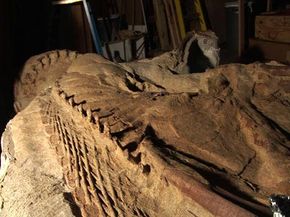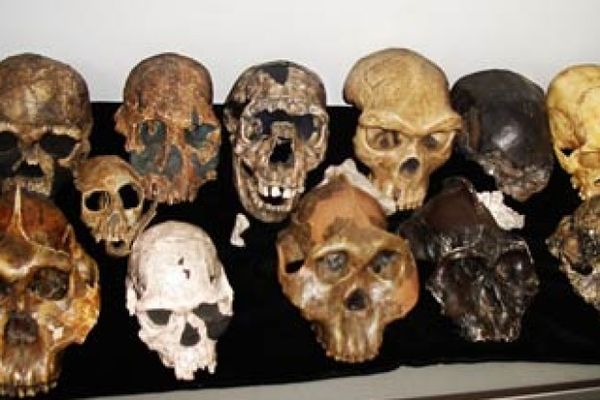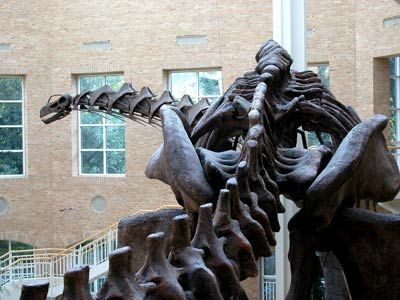In 2000, members of a Judith River Dinosaur Institute expedition found a fossil -- a 77-million-year-old duckbill dinosaur, more officially known as Brachylophosaurus canadensis. The team named the specimen Leonardo after some nearby graffiti: "Leonard Webb loves Geneva Jordan 1916." Leonardo wasn't full-grown -- it was probably only 3 or 4 years old when it died.
Dinosaur Image Gallery
Advertisement
Leonardo's body was embedded high in a canyon wall in Montana. Twenty diggers worked for more than nine weeks to remove the rock from around the fossil, and they had some high-powered help. A demolition crew used explosives to free the entire, 18-foot (5.5-meter) piece of stone from the cliff. This chunk weighed 6.5 tons (5.9 metric tons) or about as much as five Mini Coopers [source: The Leonardo Project]. When researchers had to ship Leonardo for analysis, they insured it for $2.5 million. And when it was time to plan Leonardo's world museum tour, Ford Motor Companyused rapid prototyping to make a full-scale, 3-D model to send in its place [source: Ford].
Why go to so much trouble and expense for a fossil? Paleontologists haven't uncovered many Brachylophosaurus canadensis skeletons, but the species' rarity is a just a fraction of Leonardo's importance. Unlike almost all unearthed dinosaur fossils, Leonardo still has skin. The skin isn't soft and supple like that of living animals. It's been fossilized, just like the bones.
Leonardo's now-stony skin also protected its internal organs, from its heart to the contents of its stomach. So when paleontologists study Leonardo, they're not just looking at a skeleton. They're looking at a whole body. Examining this body could provide as much information about dinosaurs as autopsies can about humans.
But there's a catch. Performing a traditional autopsy on Leonardo would destroy the fossil. So, the researchers behind the Leonardo Project have gone to great lengths to examine Leonardo's insides from the outside -- noninvasively.
Advertisement



